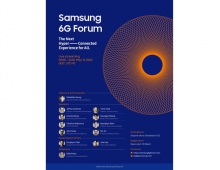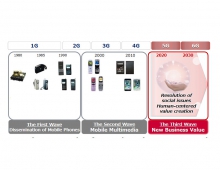
University of Oulu Works On 6G
We don't even have commercial 5G yet but still, researchers at the University of Oulu, Finland, are working on what should be next in mobile networks.
The University of Oulu's "6Genesis - 6G-Enabled Wireless Smart Society & Ecosystem" project has been chosen as one of the first two flagships in a national research programs funded by the Finish government.
The University of Oulu's program is the first one in the world to focus on 6G research. The 6G research cluster combines several challenging research areas including reliable near-instant unlimited wireless connectivity, distributed computing and intelligence, as well as materials and antennas to be utilized in future for circuits and devices.
"By 2030s the digital application range explodes and new value chains emerge. Wireless connectivity is driving major societal changes, and the impact of 6G research will be tangible for example in the automation of manufacturing technologies, sustainable energy, e-health, and autonomous transportation - all investigated in the 6G research cluster", says Academy Professor, Director of the 6G flagship Matti Latva-aho from the Centre for Wireless Communications (CWC) at the University of Oulu.
"We want to build wireless communications expertise for the future in Finland together with our partners. In developing the wireless future our multidisciplinary expertise of technologies in different applications areas as well as technology adoption by human groups and societies will be utilised", says Jouko Niinimaki, Rector of the University of Oulu.
The volume of the 6G flagship will be approximately €250 million over eight years, consisting of the University's own funding and estimated competitive external funding. On the national level, the wireless communication R&D activities are expected to reach a level of billions of euros. Flagship's scientific partners are Aalto University and VTT Technical Research Centre of Finland, and strategic partner the Joint Center for Future Connectivity established by Nokia Bell Labs and the University of Oulu.
6G research tackles the challenging technological disruption from 5G leading to 6G via three essential objectives. Firstly, supporting industry in the finalization of the 5G standard by carrying out large pilots using the continuously developing 5G Test Network. Secondly, developing essential technology components needed for 6G. Thirdly, speeding up digitalization of society via introduction of 5G and eventually 6G through demonstrating targeted application areas.
The university's project is focused on the development of wireless technology, exploring the implementation of 5G communication technology and the development of a possible 6G standard. Its main aim is to support industry in bringing the 5G standard to the commercialization stage by carrying out large pilots with a test network and to explore development of essential technology components that could be needed for 6G targeting areas such as wireless connectivity and distributed intelligent computing. In addition to communication between people, the research will focus on communication between devices, processes and objects.
"Humans are already connected, so the promise of 5G or 6G will be to connect even more objects," said Ari Pouttu, professor for dependable wireless at the University of Oulu's Center for Wireless Communications. "The near-instant connectivity is still not fully solved in 5G in terms of latency: millisecond latency is not good enough for some [time-critical] applications, so there is still a lot of potential to improve communications capability."
Pouttu added that as you start needing to handle massive amounts of data, you start getting to terabit/s communications.
When you go up in data rates, you need to go up in frequency - with ranges from 100 GHz all the way up to terahertz frequencies.
"For this, distances will be short, with radios everywhere," Pouttu said. "We'll need to start looking at totally new ways of providing over-the-air communications. Could this mean the renaissance of ultra-wide-band radio, or will it be OFDM"
Pouttu said that there is already a line of thinking that there will be 1,000 radios per person in the next 10 years. As you get into this territory, devices and circuit technology becomes a key topic, and there might also need to be new thinking on materials science.
One of the research areas that the project will be looking at is the mobile edge intelligence that will be needed to meet the needs of more data-driven near-instant connectivity. Distributed computing will become even more important, particularly multi-access mobile edge computing.
Aarno Parssinen, a professor of radio engineering at the University of Oulu, said its important to start thinking about the next generation of technology, as technology can take a long time to mature.
"If you look at millimeter-wave, the first fundamentals might have been done around the 2000 time frame, but industry has really only developed a level of maturity with this 10 to 15 years later," Parssinen said. "Even so, 5G mmWave is still 10 times more difficult to implement. The same fundamental principles might apply, but the dimensions are getting smaller. The antennas are getting tiny, with more electronics around it, and this will get even more difficult in terahertz communications."
Parssinen said he also believes that we don't have the transistors to cope with terahertz frequencies.
In future 5G development and in 6G, Parssinen says that the area of interest will be from 100 GHz to a terahertz. There will be so much frequency available that it can contain an absurd amount of data. Data intensity will not only be increased in information technology but also in terms of its wireless transport.
2G, 3G and 4G have used frequencies that reach approximately up to 6 GHz. One gigahertz equals to 30 centimetres in wavelength. 5G systems use the range of less than 6 GHz as efficiently as possible. The first commercial systems will expand this to the area of 24-40 GHz, and will be able to reach almost 100 GHz. That is when we talk about millimetre wave technology, in other words, the wavelength is in centimetres or millimetres. In 6G, we are about to jump above 100 GHz and see what happens. And so, the area of interest will be from 100 GHz to a terahertz, which means another big step forward. There will be so much frequency available that it can contain an absurd amount of data. Data intensity will not only be increased in information technology, but also in terms of its wireless transport, explains Parssinen.
We must come up with, once again, a solution that makes this reasonable and physically possible in those frequencies. Wireless connections require a lot from infrastructure as they have to pass through walls.
The antenna is a component proportional to wavelength. We started the GSM with the wavelength of 30 centimetres that has impact to minimum device size, and now we are talking about millimetre-sized structures that must be designed reliably with electrical tools. We must also be able to connect them together with electronics. We are talking about dimensions varying in proportion from nanometres to a few dozen, maybe a few hundred micrometres. Such a resolution enables the placement of thousands and millions of transistors in the same circuit, and emitting the information out to "the sky" with antenna technology for the needs of wireless communication, explains Parssinen.
The University of Oulu already has one of the world's first 5G test networks, which is used by the students in many different ways. Towards the end of the eight-year project, the University of Oulu should have the first 6G test networks.
It is as yet unknown, what 6G will be able offer the industry and ordinary consumers. However, there are some visions. Short-wave technology can be utilized, for example, in medicine for finding cancer cells, improving safety in traffic and in marine navigation.





















